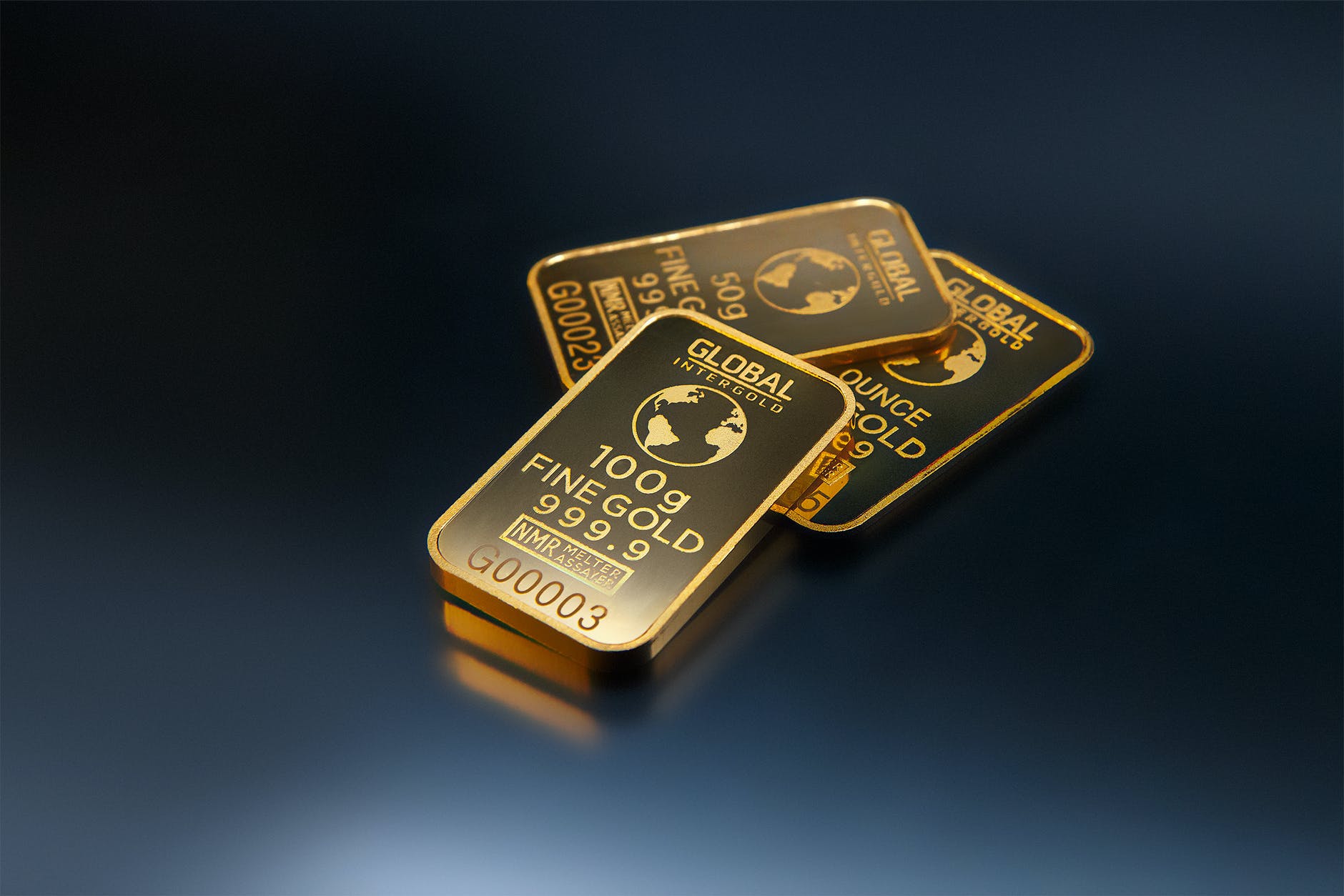Exchange traded funds, more commonly known as ETFs are frequently mentioned on many of the financial and investing channels, but what are they really? I would imagine more commonly, ETF could refer to Electronic transfer of funds, but that is not the case.
In this quick guide to ETFs, I discuss what an ETF is, within investing, how they work, different types of ETFs and various pros and cons of this investment type. I believe it’s important to have at least a base understanding of this investment type as it could be a viable option for investing.
What is an ETF in Investing?
An ETF (Exchange Traded Fund) is an investing tool similar to a mutual fund in its diversification, but trades in the stock market like a stock. After learning about mutual funds, we understand that a fund is selection of companies in one particular investment. So, you are able to diversify across multiple types of industries and usually that is good way to protect your investment from downside risk. An ETF does that very same thing. However, you can buy and sell this investment multiple times during an investment day.
ETFs are designed to specifically track some index. An index is a way to track how a set of particular companies perform. Examples include the Dow Jones industrial Average or S&P 500. These indices give a value associated with all of the underlying companies they follow. When this article was written, the Dow Jones industrial average was around 30,000. This number refers to the assigned value average of the 30 companies that make up the Dow Jones. This number will go up or go down based upon the performance of the 30 companies it follows.
For the purpose of this article, it’s important to understand that an ETF tracks an index and attempts to mirror that change in value. If you buy any ETFs that track the Dow jones industrial average, you should see that fund go up in value if the Dow goes up and conversely go down if the Dow goes down.
Types of ETFs
ETFs may trade like stocks, but they are more similar to Mutual funds in that they combine multiple companies or investment products. The ETF is designed to be a “tradeable index”. This means that you can get all the benefits of the diversification within that index but be able to buy and sell shares of the investment many times during the day.
ETFs are typically passively managed versus actively managed. Which basically means that there is no active manager like a mutual fund. Remember we discussed how mutual funds have a professional investor who buys and sells within the fund using the money you invested. ETFs do not have a professional manager, typically the fund will automatically invest in the necessary components of the index that it tracks. Below are a few common types of ETFs. I have categorized them by their investment.
Stock ETFs
This type of ETF is very similar to a Stock mutual fund. The money invested into this type of fund will increase assuming the value of the underlying stock and index it follows will go up. For example, a Dow Jones ETF. Whenever money is invested in that fund, the investor benefits from the gains. But similarly, share in the losses. Keep in mind with an ETF, you are purchasing a basket of existing investments. This is not like a mutual fund where the fund manager buys more using your investment. There is no active management in most ETFs. With Stock ETFs, you are also able to buy investments that track specific industries. Say you want to invest in the technology space, but not sure which particular company to invest in. There are several technology ETFs that could be good investments. Also, there are several ETFs that focus on investing in socially responsible companies. For more on those ETFs, check out my review of SRI and ESG investing.
Bond ETFs
Unlike individual bonds, bond ETFs don’t have a maturity date, so the most common use for them is to generate regular cash payments to the investor. A bond is effectively a loan of money to a company where the lender (you) gets an interest payment. This allows the purchaser of a Bond ETF to benefit in the same interest payments. Bond ETFs can be an excellent, lower-risk complement to stock ETFs and they usually offer a much higher dividend than any stock ETF
International ETFs

This particular type of ETF investment seeks to mirror non-US indexes. So if you are looking to invest or achieve similar results to an international index, this might be a good option. There are ETFs of nearly every international index in the market. This is a way to diversify your portfolio with some exposure to markets outside of the United States.
Commodity ETFs

Commodities are physical goods. They can be traded in an open market. We discussed this a little in the mutual fund post as well. Here though you may have to do more research or work with your investment advisor, because this type of ETF can either be solely tracking the index of the underlying commodity or it can track the index of the company that specifically sells this type of commodity. To explain further, you could either buy an ETF that tracks the specific price of gold or you could buy the investment that tracks companies that are in the gold industry.
Pros and Cons
Diversification
One of the key advantages of ETFs is similar to Mutual funds; Diversification. Unlike individual stocks, mutual funds and ETFs are based upon multiple companies. This key factor allows the investor to spread the investment over multiple industries so that if one company in the group goes down in value, it may be offset by another company going up in value.
ETF Cost
There are many ETFs that do not charge any fees to buy into or sell out of. As a best practice, I would suggest avoiding additional brokerage fees to buy and sell the investment. However, they are typically less costly than mutual funds when considering additional fess. Exchange Traded Funds are not actively managed versus their mutual fund counterpart. There are more fees when a fund is managed professionally.
Tax Benefits
In most cases, ETFs can be more tax efficient than mutual funds acting, once again as a stock transaction. Tax is typically charged when the ETF is sold. It is based upon the length of time you hold the investment. A mutual fund, however, can be taxed even while the fund hasn’t be sold. The mutual fund consistently buys and sells stocks creating capital gains.
Intra-day Trading
One of the major benefits and differences of ETFs and mutual funds is the ability to trade the ETF during the day. You can only trade mutual funds once per day. This key benefit allows an investor to get into an investment and if they need to get out quickly, they can. However there are limitations to this as well, make sure you don’t get an “itchy trading finger” and try to buy or sell too quickly. It is extremely difficult, if not impossible to affectively time the market with the perfect investment.
Liquidity

Since the ETF trades like a stock, investors must buy at the Ask price and sell at the Bid price. If there isn’t a large market for this particular ETF, the difference between what you buy at and what you sell at could be significant. Furthermore, there is rule of settlement. When you sell a stock or ETF, there is a 3-day settlement rule before the funds can be withdrawn. This is typically not the case with mutual funds, they have a settlement period of 1 day.
Disclaimer: I receive affiliate compensation for some of the links in this article at no cost to you. However, these are the best tools I have used and tested that I believe are most effective for launching and running an online business. You can read our full affiliate disclosure in our privacy policy.
Is an Investment in an ETF right for me?
This is difficult to answer in an blanket statement. Everyone is different and at different stages of their investment journey. I would offer that prior to making any investment decision you must first consult a financial advisor. In general, ETFs carry lower costs, offer diversification and more flexibility than mutual funds. However, you must make sure to do your due diligence and confirm all the costs associated with an ETF. Make sure to watch for any hidden costs just like with Mutual Funds. In addition, make sure you aren’t too quick on buying or selling the particular fund.
An investment in an ETF could be a very lucrative investment. I have ETFs in my personal portfolio. I also have been investing for many years. Typically I use ETFs as a broad market diversification strategy that allows me to capture the investment gains of an index. If you are not looking to actively manage your investments, it may make sense to look at mutual funds as an alternative.
I suggest looking into investments that track an index such as the S&P 500. This is a good strategy if you are not extremely comfortable with the stock market. Keep in mind that I am not an investment advisor or tax advisor. Two books that I would recommend to better understand ETFs would be ‘Getting Started in Exchange Traded Funds‘ and ‘ETF Trading Strategies Revealed‘. Both go into much more detail on ETFs and trading strategies. Please consult a professional before making any investment decisions.
I hope you enjoyed my article on ETFs and a brief summary of what they can do. Please follow me on social media and feel free to comment below.
But before you go…
If you want to learn how you can take ANY business and scale it to your dreams and goals?
Partner up with me by clicking on this link and watching the video.
We will show you EXACTLY how to build a business online and customize a plan just for you. We will help you choose a niche, setup your online business and help with selecting offers that you can promote.
On top of that you will get ONE on ONE mentoring to make sure you are doing things right.
A great way to be able to save more money is when we make more money.
Cheers to your success and See you at the Top!
-Cameron


